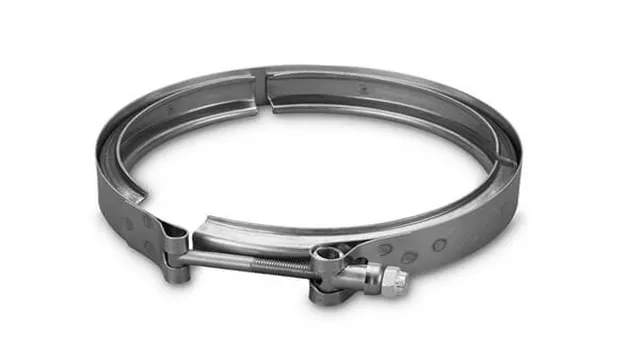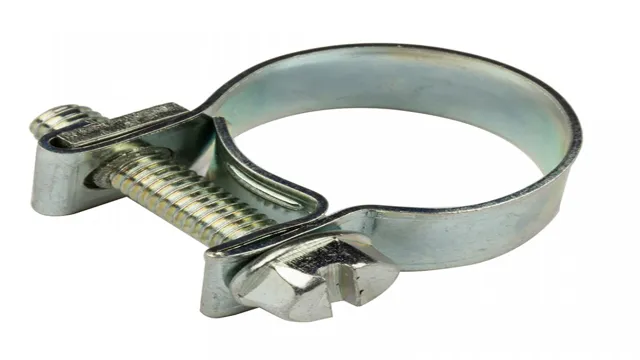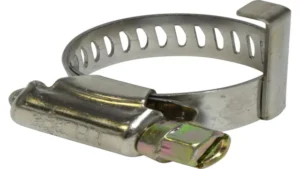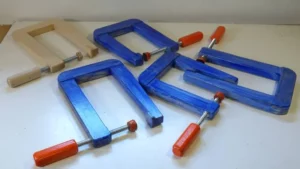If you’re a car enthusiast, you must have come across V band clamps before. They are the go-to solution for secure, efficient, and easy-to-apply connections between pipes or tubes. However, it’s not enough to just know about these clamps; you must also understand the proper tightness for V band clamps.
Like most things, too much or too little tightening of V band clamps can have adverse effects. Over-tightening can cause damage to the pipes or tubes being connected, while under-tightening can result in leaks or slippage. Thus, finding the right balance is crucial to ensure optimal performance and longevity.
In this blog, we’ll dive deeper into the nuances of V band clamp tightness. We’ll explore how to determine the ideal tightness, what tools to use, and various considerations to keep in mind. By the end, you’ll have a better understanding of how to achieve proper V band clamp tightness, and you’ll be better equipped to make informed decisions when working with these essential tools.
So, let’s get started!
Introduction
If you’re asking yourself how tight should V band clamps be, the answer is that it depends on the application. V band clamps are commonly used in exhaust systems and turbochargers, and are known for their secure sealing and easy installation. However, it’s important to tighten V band clamps appropriately to avoid any leaks or damage to the components.
Generally, a torque wrench is recommended to tighten V band clamps to the manufacturer’s specifications, which can vary depending on the size and material of the clamp. It’s essential to not overtighten the clamp as it can result in distortion or damage, but also not undertighten as this can cause the clamp to fail and create exhaust leaks. Properly tightened V band clamps can ensure a strong and reliable seal in your exhaust or turbo system, and maintain the performance you desire.
Definition of V Band Clamps
V band clamps are a type of fastener that are commonly used in automotive and industrial applications. They consist of a ring of material with a V-shaped profile, which is tightened around a joint or fitting using a bolt or screw. V band clamps are known for their ability to provide a secure and leak-free connection between two components, while also allowing for easy assembly and disassembly.
These clamps are often used in exhaust systems, turbochargers, and intercooler piping, where they are required to hold up under high temperatures and pressures. Overall, V band clamps provide a reliable and versatile solution for connecting pipes and fittings in a wide range of industries and applications.

Importance of Proper Tightness
Proper tightness is crucial in various aspects of our daily lives. Whether it’s the tightness of a jar lid or the tightness of a screw, the importance of a secure fit cannot be ignored. This applies to many different things, including the tightening of bolts and nuts in industrial machinery, the pressure of the tires in our vehicles, and even the tightness of our shoelaces.
A lack of proper tightness can lead to numerous problems, such as a lack of efficiency, safety concerns, or even catastrophic failures. In essence, proper tightness is essential to ensuring that things run smoothly and safely. Thus, it’s vital to pay attention to the tightness of the things in our daily lives to avoid unwanted situations.
Factors Affecting Tightness
When it comes to v band clamps, the tightness is a crucial factor that affects their performance. But how tight should v band clamps be? The answer to that question depends on several factors such as the diameter of the pipe, the material of the clamp and the pipe, the temperature range, and the pressure rating. Generally, v band clamps should be tightened to a torque value that correlates with the specifications of the manufacturer for the specific material being clamped.
Over-tightening can lead to deformation of the clamp or flange, while a loose clamp can result in leaks or even catastrophic failures. Additionally, it is important to re-check the tightness of the clamp after a period of use, especially if the temperature range is high or if the clamp is subjected to vibration or movement. So, the right amount of tightness in v band clamps is crucial in ensuring their optimal performance and longevity.
Type of Material Being Clamped
When considering the tightness of clamps, the type of material being clamped is a crucial factor to consider. Different materials have varying levels of compressibility, which can impact how tightly a clamp can be secured onto them. For example, soft materials like rubber or silicone may require a gentler grip to avoid deformation, whereas harder materials like metal or wood may require a stronger grip to achieve the desired level of tightness.
Additionally, the surface texture of the material can impact the grip of the clamp, as smoother surfaces may be more difficult to grasp than rougher surfaces. It’s important to take into account these factors to ensure that the clamp is securing the material properly without causing damage or slipping off. Overall, understanding the type of material being clamped is critical in determining the appropriate level of tightness and achieving a secure hold.
Temperature Changes
Temperature changes can have a significant impact on the tightness of various components. There are several factors that affect tightness, including thermal expansion and contraction. When a material is exposed to higher temperatures, it expands, and when it’s exposed to lower temperatures, it contracts.
This can lead to a loosening of bolts, nuts, and other components as the material begins to shift. Additionally, temperature changes can cause materials to become more brittle or ductile, which can affect their ability to maintain a tight seal. It’s essential to consider the thermal properties of all materials used in a system and ensure that they can withstand the temperature ranges they may encounter.
Proper planning and regular maintenance can help to prevent issues related to temperature changes and ensure that a tight seal is maintained.
Clamp Size and Width
When it comes to choosing a clamp for your project, size and width are crucial factors that determine the tightness of your installation. The clamp size refers to the diameter of the pipe or object that you’re intending to secure. A clamp that is too large or too small will not provide adequate tightness, leading to potential leaks and safety hazards.
On the other hand, the width of the clamp determines how evenly the pressure is distributed across the surface area, ensuring a secure and stable fit. It’s essential to measure the dimensions of your target object precisely to ensure that the clamp fits snugly and securely. Having a well-fitting clamp is essential for safety and reliability, especially in high-stress environments.
So, ensure you choose the right size and width of clamp to avoid potential leaks and safety hazards.
How to Measure Tightness
One of the most important parts of using V-band clamps is getting the tightness just right. If they’re not tight enough, you risk leaks and potential damage to your system. But if they’re too tight, you could end up damaging the clamp itself or even causing your pipes to warp or break.
So how tight should V-band clamps be? The answer depends on a few factors, like the type of clamp you’re using and the materials you’re working with. As a general rule of thumb, it’s a good idea to tighten the clamp to about 75% of its maximum torque rating. This will provide a good seal without putting too much stress on the clamp or its components.
And remember, always check your clamps regularly to ensure they’re still tight and secure.
Using a Torque Wrench
Using a torque wrench can be daunting, especially if you’re not familiar with how to measure tightness. A torque wrench is a tool used to quickly and precisely tighten bolts, nuts, and other fasteners to exact specifications, ensuring that they’re neither too tight nor too loose. To use a torque wrench effectively, you’ll need to learn how to read and adjust the tool’s setting.
The first step in using a torque wrench is to identify the correct torque setting required for the fastener you’re tightening. This information is usually provided in the manufacturer’s instructions or in a torque specification chart. Once you have found the correct setting, you should ensure that the bolt or nut is correctly aligned and insert the torque wrench into the head of the bolt or nut.
With your other hand, apply pressure to the handle of the torque wrench while tightening the bolt or nut until you hear or feel a “click.” This indicates that you have reached the desired torque setting and that the fastener has been tightened to the correct specification. Finally, you should double-check the fastener’s tightness using a regular wrench or socket to ensure that it is secure.
Remember, using a torque wrench ensures your fasteners are tightened consistently and properly, which is important for their longevity, safety, and functionality.
Checking for Gap Size
When it comes to measuring tightness, checking for gap size is an essential factor. If there is a gap between two objects that are meant to fit perfectly, then the tightness is not up to the mark. To measure the gap size, you can use a feeler gauge or a thickness gauge.
Both these tools can help you measure the width of the gap accurately. Simply insert the gauge between the two objects and check the measurement. If the gap size exceeds the recommended measurement, then you need to tighten the objects to improve the grip.
Checking for gap size can be challenging, but it’s a critical step to ensure that everything fits precisely and tightly for optimal performance. As you check the gap size, make sure to keep in mind the recommended measurement for optimal tightness. Remember, a tight fit is a must to ensure the best performance and safety.
The Consequences of Improper Tightness
When using V band clamps, many people wonder, “how tight should V band clamps be?” The truth is, proper tightness is critical to prevent leakage and maintain the integrity of the connection. If the clamp is too loose, it can cause gas or fluid to leak, leading to a host of problems such as loss of power, reduced efficiency, and even engine failure. Conversely, if the clamp is too tight, it can cause deformation or damage to the sealing surfaces and ultimately lead to failure.
Finding the appropriate tightness takes a delicate balance but can be achieved by using a torque wrench and referring to the manufacturer’s recommendations. Overall, it’s important to approach tightening V band clamps with care and precision to avoid any costly or dangerous consequences.
Loose Clamps
Loose clamps can have severe consequences for any machinery or equipment. It is essential to ensure proper tightness to avoid any breakdowns or malfunctions. When clamps are not tightened to their recommended torque values, components may shift and move, causing wear and tear.
This can lead to leaks, ruptures and even complete failures. Loose clamps can also cause vibrations, which may result in damaging the surrounding components and further leading to mechanical failure. It is important to note that over-tightening can also be a problem, as it may warp or crack the component, leading to the same end result.
So it is crucial to take the time to ensure proper torque specifications are being met by following the manufacturer’s recommended guidelines. Properly tightened clamps help ensure safety, prolong the life of equipment and prevent unnecessary downtime or costs.
Over-Tightened Clamps
Over-tightened clamps can have serious consequences on your vehicle’s performance and safety. When clamps are tightened too much, they can cause deformation to the hose, which in turn can lead to cracking and leaks. This can be particularly dangerous if the hose in question is a fuel or brake line.
Over-tightened clamps can also cause damage to the fitting, leading to leaks and an overall decrease in the efficiency of your vehicle. That’s why it’s important to always follow the manufacturer’s instructions when tightening clamps, taking care not to overtighten them. If you’re not sure, err on the side of caution and use a torque wrench to ensure the clamps are tightened to the proper specification.
Taking the time to ensure your clamps are tightened correctly can save you a lot of headaches down the road.
Conclusion
Just like relationships, V-band clamps need to be tight enough to keep things together, but not so tight that they cause damage or restrict movement. It’s all about finding that sweet spot, that perfect balance, where things are firmly connected, but still free to move and adjust as needed. So tighten those clamps, but don’t hold on too tight.
After all, a little bit of wiggle room can be a good thing.”
FAQs
What is a V-band clamp?
A V-band clamp is a type of fastener that is used to join two pipes or tubes together.
How tight should V-band clamps be?
The tightness of V-band clamps should be enough to create a leak-proof seal, but not so tight that it deforms the pipes or tubes being joined. Tightness can be determined by using a torque wrench to achieve the manufacturer’s specified clamping force.
Can V-band clamps be reused?
Yes, V-band clamps can be reused as long as they are not damaged or deformed. It is recommended to inspect the clamps before reuse.
What materials are V-band clamps made of?
V-band clamps can be made of stainless steel, aluminum, or titanium, depending on the application and environmental conditions.
Are V-band clamps suitable for high-pressure applications?
Yes, V-band clamps are suitable for high-pressure applications as long as they are designed and manufactured to handle the specific pressure and temperature requirements.
Can V-band clamps be used in automotive applications?
Yes, V-band clamps are commonly used in automotive applications, especially for exhaust systems.
What are the advantages of using V-band clamps?
The advantages of using V-band clamps include easy installation and removal, consistent clamping force, and leak-proof sealing.






